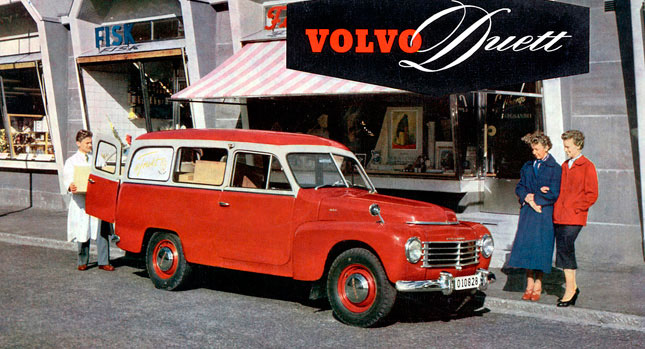As its name suggested, the Volvo Duett was designed to be two cars in one: a van and an estate. The Swedish brand’s first series-produced estate car, the Duett is the model that made Volvo’s hallmark wagons possible.
On July 4, 2013, the Volvo Duett celebrates its 60th anniversary, as on the same day in 1953, Volvo produced its first 445 Duett. Based on the 445 chassis, the first Duett was bought by none other than Volvo’s boss at the time, Assar Gabrielsson.
Gabrielsson had the idea of turning the 445 into an estate, as by the beginning of 1952, the company had 1,500 unsold 445 delivery chassis parked outside the factory. “Build our own Volvo van!” was Gabrielsson’s order and thus the Duett was born – Volvo’s first van/estate model.
Engineer Erik Skoog and his small team designed a versatile body for the 445 chassis, which was equally suitable for transporting goods or people. Less than 15 months later, the first 445 Duett came to life. Development work for the Duett was carried out at the Volvo pressing plant in Olofström, where the bodies were manufactured too. Final assembly took place in the Volvo Lundby plant in Gothenburg.
The Duett allowed Volvo to offer both commercial vans and slightly more luxurious versions for family rather than strictly business use. In essence, it was a working car during the week and a leisure car for the weekend.
The Duett was the last Volvo car to be built on a separate frame and was manufactured until 1969, when Sweden introduced new crash test legislation. Realizing that the Duett would not pass the new crash tests, production was ended.
The very last Duett made was kept by Volvo and is currently on display at the company’s museum. In total, Volvo built over 97,000 Duetts (101,492 if the separate chassis versions are added).
By Dan Mihalascu
PHOTO GALLERY











